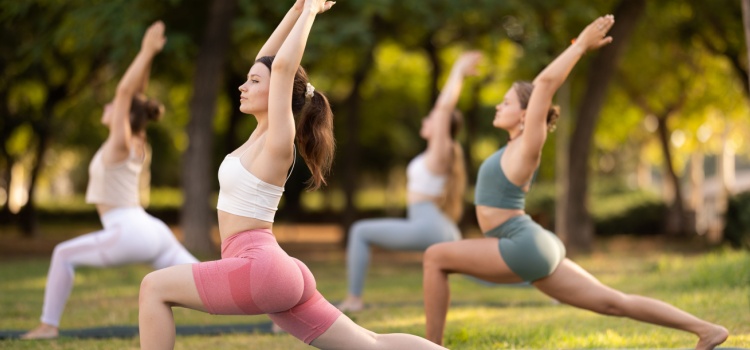How to train and improve your “sixth sense”

Did you know that top athletes are coached on their “sixth sense” as part of their training?
Proprioception is your body’s sense of where it is in space.
It’s what allows footballers to score a goal without looking down at the ball or gymnasts to orient themselves in the air while somersaulting, but it’s also what allows us to open a door without using too much force and walk on uneven ground.
Read on to learn more about proprioception and discover how improving your “sixth sense” could benefit you.
What is “proprioception”?
As technology has advanced in recent years, scientists have been able to learn more about the proprioceptive sense and how it affects our daily lives.
MRI studies found that our bodies have specific neural pathways and brain regions dedicated to this “sixth sense”.
Proprioceptors – receptors located in the muscles, tendons, and joints – work together with our other senses to give our brains a better understanding of our movements and environments.
This allows you to sense the position of your body, as well as gauge the weight of objects or notice changes on surfaces you’re walking on.
For example, try wiggling your fingers or toes. You should be able to feel them moving without having to look down to visually confirm it.
Is a high level of proprioception good for you?
A high level of proprioception can help experienced trail runners avoid spraining their ankles and prevent parkour athletes from falling. However, training your proprioceptive sense can also benefit you in everyday life.
As we get older, our level of proprioception declines. This is one of the reasons why older people tend to have reduced coordination and are at higher risk of falls and injury.
Training your proprioceptive sense could be the difference between leaving a fall with a few bruises or some broken bones.
Furthermore, improving your level of proprioception can also help you to increase your mobility and dexterity, and can even encourage you to get your body moving more regularly.
How can you train your “sixth sense”?
Before you begin training your “sixth sense”, it’s important to assess what level of proprioception you currently have.
Some people have more finely tuned proprioceptors than others, but other factors can affect how well you perform at certain tasks, such as neurological disorders or diabetes.
Your level of proprioception may also depend on the task. One person may be unable to balance on one leg but has impeccable hand-eye coordination, and vice versa.
So, if you’d like to train your sixth sense, try a few of the exercises below and focus on the activities you struggle with the most.
1. Join a stretching class
Exercises such as pilates, tai chi, and yoga have all proved to be effective in training your proprioception.
The combination of static balance training, deliberate movement, and close-eye exercises will help you to feel more in tune with your body and help you to move safely and flexibly.
You can also improve your static balancing skills at home by standing on one leg while doing mundane activities such as brushing your teeth or answering a call.
2. Train your mobile balance
Balancing on the spot is an important step to improving your proprioception, but it’s also crucial to boost your balance while moving.
An easy way to test how well you can balance while in motion is heel-toe walking. Walk along a straight line, as if balancing on a tightrope, while touching your front heel to your rear toe at each step.
Once you’re able to do this without wobbling or stepping off to the side, you can challenge yourself by walking across thin surfaces, such as pavement kerbs or even low railings.
3. Improve your hand-eye coordination
Working on your hand-eye coordination could help you stop dropping things and improve the dexterity of your fingers.
You can train this skill by playing catch with someone else or bouncing a ball off a wall. And if you’d like to challenge yourself, try doing this one-handed.
4. Pick yourself up
One of the proprioceptive skills we tend to take for granted until it starts to become difficult is the ability to stand up without assistance.
Start challenging yourself to get to your feet from chairs – or, even more importantly, from the floor – without using your hands or anything around you as a support.
This skill is vital as it will help you to retain your mobility for longer.
5. Keep bending
Another important skill to train, especially as you get older, is your ability to bend.
While balance is a vital aspect of this skill, it’s also crucial to train your muscles and proprioceptive sense to be able to bend comfortably.
Try dropping something light – for example, the ball from earlier, or a pillow – and bending down to pick it up, alternating between hands each time.
As you repeat this activity, try to get more creative with the ways you lower yourself to the ground. Try lunging or squatting to bend down, or make it harder for yourself by dropping your item further away.






